At the start of the next lesson, present pupils with two more sets of data, this time comparing two groups of unequal size. Using group sizes of 20 and 30 are particularly effective.
Eventually, someone will come up with the idea of using equal sized bars, and they usually spot that the most sensible number to use here is 60. We're starting to develop the idea of common denominators, although I'm not using that language at this stage. They then draw the equal bars and produce the fractions tables again.
- What is the difference between the number of pupils who liked bananas in Year 8 and 9?
- How many pupils in Year 9 liked either oranges or melons?
These develop the ideas of adding and subtracting as totals or differences, allow pupils to compare these amounts on a bar, and reinforce the idea that you don't add the denominators.
Depending on how I feel pupils' understanding is developing, I might then give them another set of data such as this one:
Something that's really important when working on lessons or tasks which enhance understanding is not to push too hard at a final goal, but to assess and allow pupils to develop at a rate appropriate for them. Occasionally I have left this next step to the next lesson, set it as homework, or (with pupils whose understanding is developing quickly), ask them to do this straight away without bars.
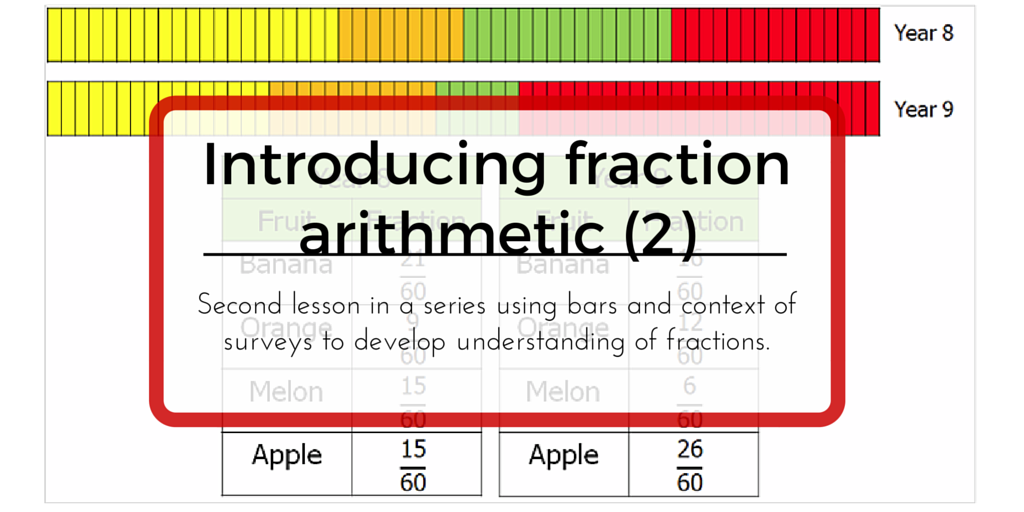
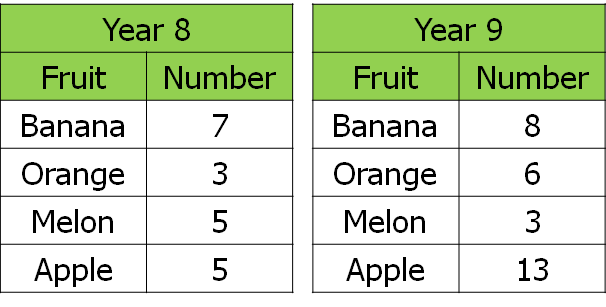

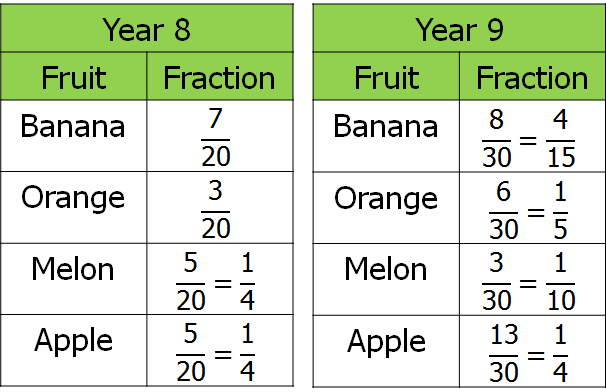
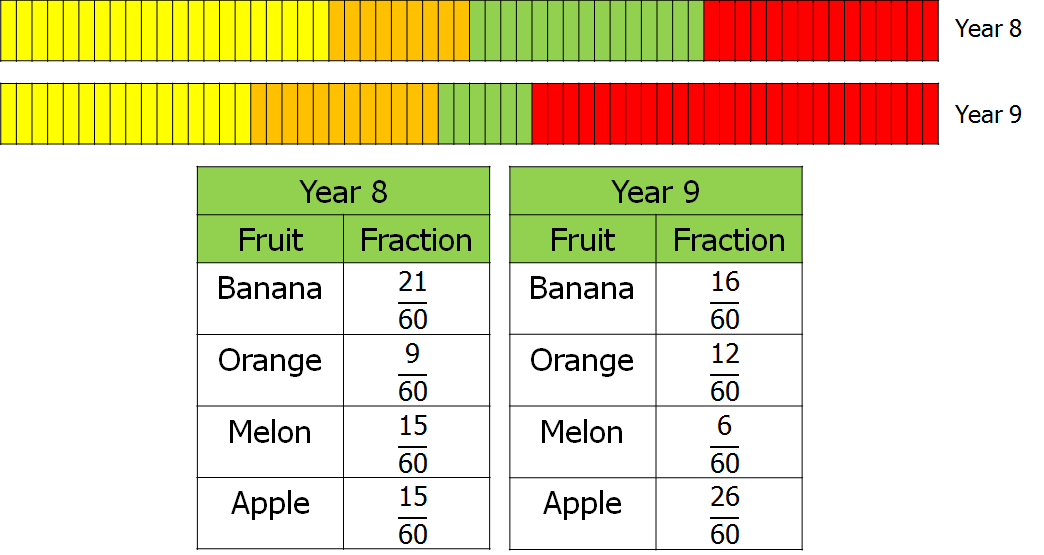
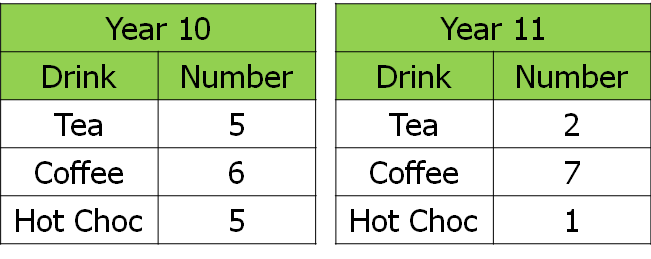
 RSS Feed
RSS Feed

Love the bar fractions never tried it it's fabulous . I'm already thinking about using it with smarties data handling...